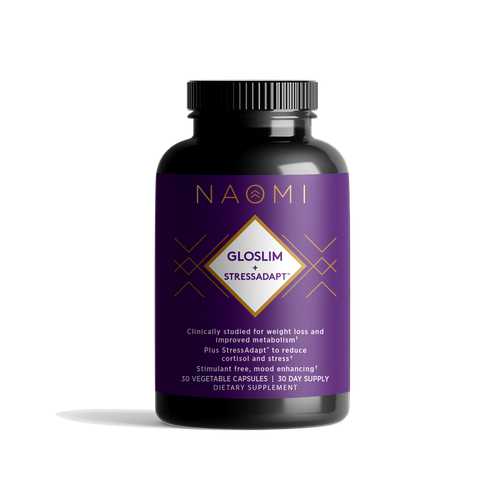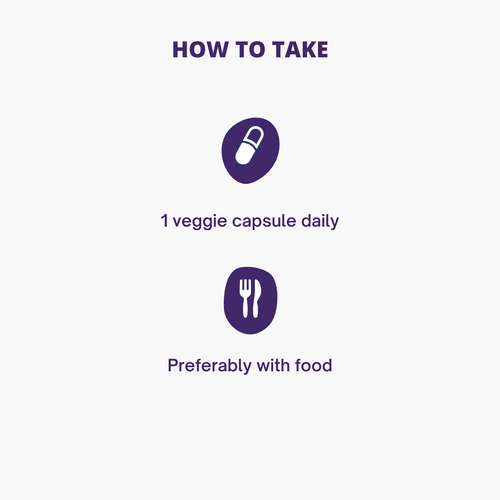The Healing Benefits of Soups and Stews
There’s nothing more nourishing than a bowl of homemade chicken soup from a loved one when you’re in bed with a cold or recovering from a high-stress event such as giving birth, the passing of a loved one or even positive life events such as a wedding or milestone event. When you’re the caretaker and making that delicious healing soup for a friend or family member, it feels so good to be useful in this way, knowing that all your love and affection for this person is going into this soup to help them get better.
The tradition of preparing healing soup for the recovery of a sick patient goes back centuries. In his 12th century treatise, Egyptian Jewish physician and philosopher, Maimonides, writes about using chicken soup for upper respiratory tract symptoms.
In more recent times, a 2000 University of Nebraska study put Grandma’s chicken soup recipe to the test when it looked at a traditional chicken soup recipe (that used the broth from cooking the whole chicken) and its impact on neutrophils. Findings on this important study showed that chicken soup had a significant ability to inhibit neutrophil (white blood cell) migration, indicating a significant ability to reduce inflammation.
Not Just For Colds
Colds aren’t the only reason to make a hearty soup, however. Soups and stews are beneficial any time of the year when you’re feeling fatigued when there’s a change of season into the colder months when you’re preparing for going into or coming out of a fast, or anytime your immune system could use the support. The abundance of nutrients in the broth, as well as the well-cooked veggies and meats, are easier on digestion. Eating healing soups and stews allows your body to conserve some of the resources it would normally spend on the digestion of raw and less easily digestible foods, and instead uses them for healing and repair. Soups and stews are incredible foods for recovery after surgery and for women who are needing nutrient density during the postpartum time. The nutrients are easily digested and assimilated, perfect for helping to balance hormones and build blood.
There are different ways to make a homemade healing soup. In the Nebraska study, a whole chicken was cooked for over 2 hours to obtain the broth for the soup. Different recipes will offer a variety of ways to get the delicious, nutrient-rich broth. What they all seem to have in common though is that either the bones or the bones plus meat from chicken, beef or fish (other animals can be used as well) is really what makes soup such a powerful healing agent.
Stews, likewise are another way to receive nutrient-dense and delicious meals. Stews tend to be thicker and contain meat and vegetables cooked slowly in a covered dish or pan.
It Begins With The Broth
To get the most of your nourishing soups, start with a base of bone broth. You can order pre-made bone broth from companies online or you can make your own using bones from chicken, beef or fish. Other bones from pork or lamb can be used and will impart a slightly different flavor. You can use the whole chicken to make the broth or just the bones. They can be raw or already cooked. There are a variety of ways to make the broth and I personally like to do what is easiest. This can mean saving leftover bones from a roasted chicken or see the recipe below to use the whole chicken to make the broth.
I’m less concerned with how exactly the bone broth is made and more concerned with the quality of the meat and bones that are going into making the broth. As with anything we eat, quality matters. Be sure to select wild or organic, pasture-raised, free-range, antibiotic and hormone-free meat and bones whenever you can.
Bone broth contains gelatin which is essentially cooked collagen. It contains some key amino acids that while the body can produce on its own, during times of illness or stress they can easily be depleted and it’s best to get them from food. Given that many people are under chronic stress and dealing with health conditions as a result of stress, consuming bone broth by eating healing soups and stews is an excellent way to build your resiliency against stress-related illness. The gelatin in bone broth contains 3 key amino acids:
- Glycine: important in the production of DNA and RNA, hemoglobin, bile salts, stomach acid secretions as well as reducing inflammation.
- Proline: contributes to healthy collagen production in skin and arteries and helps heal cartilage and cushion joints.
- Glutamine: important in digestive and immune health, muscle-building and healthy brain function.
Proteoglycans are another unique benefit you’ll receive when your soup is made with homemade broth. These large, complex molecules are made up of proteins and sugars that attract and hold water which provides cushioning and lubrication to your joints and connective tissue, especially important while recovering from a surgery or illness, or to support healthy aging. You may be familiar with a common proteoglycan used in the supplement industry, hyaluronic acid to support beautiful, supple skin.
The ingredients found in bone broth are also ones that increase healthy digestion by supporting the mucosal lining of the intestinal wall. This has a potentially important impact on inflammatory conditions like celiac disease, colitis, Crohn’s disease, and IBS.
Secret Ingredient
In my travels to China, I was fascinated to learn all about the health and beauty secrets of the women who have flawless skin and beautiful thick, black, lustrous hair. It’s not uncommon for them to eat parts of the animal that we wouldn’t dream of eating. But I learned that is where some of the most nutritious parts of the animal are found and add a boost of collagen, protein, and minerals that aren’t always easy to find in other foods. If you want to increase the nutrition of your bone broth go to the butcher’s department at your grocery store, or local farm and ask for chicken feet (make sure to ask that they are already cleaned, unless you don’t mind doing that!). By adding chicken feet, you’ll give your bone broth the added bonus of even more gelatin and you’ll see and feel the beautiful benefits your skin, hair, nails, gut and connective tissues will receive.
Now That Your Freezer’s Stocked…
Once you have your freezer stocked with some homemade broth, you now have access to one of the most nutrient-dense foundations to create a healing soup or stew. In addition to the nutrients found in the broth, when you eat a hearty stew or healing soup, you’re giving yourself the benefit of foods that are easily digestible and more broken down, allowing your body to do less work while getting more out of it. Look at all the benefits you’ll be receiving when you choose to include these healing foods into your soups and stews:
- Meat and Fish: By including meats like chicken, beef, pork, lamb and wild seafood into your soups and stews you’ll be getting important micronutrients like iron, zinc, iodine, vitamins B3 and B12 and the all-important omega-3 fatty acids. While cooking meats can often involve losses in B vitamins, when you consume the liquid the meat is cooked in, you’ll be recouping those vitamins you would have lost. You’ll, of course, be getting an excellent source of essential proteins and without the effects of eating added AGE’s that are formed when meats are cooked at high temperatures like grilling or frying. AGE’s stand for Advanced Glycation End-Products and contribute to cellular oxidation and accelerate the aging process. The protein and nutrients in meat will help you to build healthy neurotransmitters, maintain lean muscle mass and will support your cells in energy production.
- Vegetables: Similar to meats, any vegetables you add to soups and stews you’ll be reaping the benefits of the nutritional properties of the vegetables as well as any nutrient loss you’d encounter with steaming or boiling methods. When you include a variety of vegetables into your soups like root vegetables—carrots, parsnips, beets, turnips, sweet potatoes, onions and rutabagas you’ll be getting a healthy source of starchy carbohydrates along with vitamins A and C, dietary fiber and minerals like potassium, calcium, iron, magnesium, and zinc. Beta-carotene rich squash like butternut and acorn squash add valuable antioxidants and make a delicious pureed soup. And let’s not forget the greens! Choose a variety of dark leafy greens like kale, spinach, chard, watercress, cabbage and broccoli to get a healthy dose of folate, vitamins C and K, iron, magnesium, and calcium. With all of these delicious vegetables, you’ll be supporting healthy vision, fighting inflammation and supplying your body with an abundance of mineral cofactors.
- Herbs and Spices: Add both dried and fresh herbs and spices to your soups and stews for a variety of flavors and polyphenols to help your body handle oxidative stress and inflammation—the processes involved in all chronic diseases. Herbs and spices are truly nature’s medicine and one of the easiest ways we can bump up the nutrient density in our diets. Make it a habit of having on hand some of these powerful herbs and spices to add anytime you want to make soup or stew: rosemary, basil, thyme, parsley, turmeric, garlic, ginger, oregano, dill, cumin, coriander, and Ceylon cinnamon. As a general rule of thumb use half the amount of dried herbs as you would fresh herbs and add delicate herbs like freshly chopped parsley and cilantro towards the end of cooking your soup or stew to preserve the flavor.
- Sea Vegetables: Seaweeds are some of the healthiest and often underutilized foods in American cuisine today. Japan has some of the largest population of centenarians on the planet, people living to be over 100 years old. Diet is one main reason why researchers believe the Japanese enjoy such longevity. A variety of seaweeds like kombu, wakame, arame, dulse, kelp, and hijiki are considered staples in their diet and perhaps play a main role in why the Japanese tend to live so long. Seaweeds are plentiful in nutrients like iodine, iron, calcium, magnesium, zinc, potassium, manganese and copper. They contain lesser amounts of the essential fatty acids omega-3 and 6, as well as vitamins A, C, E and B vitamins. Seaweeds are some of the best foods you can eat to support healthy glands like the thyroid and adrenals.
- Mushrooms: Mushrooms are another often-underappreciated food that adds delicious flavor and nutrition to your soups. If you want a vegetable soup, mushrooms can provide a heartiness that can take the place of meat. Whether it’s an Asian style soup or cream of mushroom that you’re going for, play around with adding creminis, shiitakes, portabellas, chanterelles, and oyster mushrooms. Mushrooms contain nutrients that boost your immune system and are in fact one of the best foods to increase natural killer cells-vital in your body’s ability to seek out and destroy cancer cells. They are full of trace minerals, fiber, B vitamins and a powerful antioxidant called ergothioneine that helps to lower inflammation throughout the body.
- Miso: Used for its earthy, salty and delicious flavor in Asian cuisine, miso has the added benefit of being a probiotic. Traditionally made by fermenting soybeans with salt and the fungus Aspergillus oryzae, rice or other grains are sometimes added. In addition to being a probiotic, miso is a good source of calcium, iron, magnesium, selenium, phosphorus and B vitamins. One study published in the Journal of the National Cancer Institute revealed that regular consumption of miso reduced the risk of breast cancer in women by up to 54 percent! To preserve the beneficial probiotics found in miso, never boil it, but instead, remove the soup from the heat source and make a miso “slurry” by taking about half a cup of the broth from the soup and in a separate bowl whisk the miso into the broth until it’s thick and no lumps remain. Mix this miso slurry back into your soup to enjoy. Need a recipe, try my Alaskan Cod Miso Soup!
Homemade Soup, It’s Worth It
Hopefully, you’re as excited as I am about what adding homemade soups and stews with bone broth can do for your health!
Use the Crockpot Bone Broth recipe below to start with a nutrient-dense foundation to your soup. From here, it’s really pretty easy. Start with some fat like ghee, coconut oil or avocado oil to sauté onions and garlic, don’t forget your powerful polyphenol herbs like thyme, dill or rosemary. Add your favorite vegetables like chopped broccoli, carrots, celery, and parsnips. Once those have had a chance to cook and soften, add the bone broth in, bring to a boil and quickly turn down to a simmer. Add the cooked meat from making the bone broth into the soup and simmer until vegetables are tender and cooked through. Season with salt and pepper and top with fresh parsley to enjoy.
Crockpot Bone Broth
Ingredients:
1 small organic chicken
3-4 chicken feet (optional)
2 carrots, coarsely chopped
2 celery, coarsely chopped
1 small onion, coarsely chopped (can leave unpeeled)
2 garlic cloves (can leave unpeeled and whole)
3 sprigs of thyme
1 tablespoon apple cider vinegar
1 bunch parsley, coarsely chopped
Filter water, enough to cover chicken and vegetables
Instructions:
- Place chicken (and optional feet) in a large (6 quart) crockpot.*
- Add carrots, celery, onion, garlic, thyme, and apple cider vinegar.
- Fill crockpot with enough water to cover chicken and vegetables, leave 1-2 inches of space at the top so the broth doesn’t overflow.
- Cook on low throughout the day for about 8 hrs. Within the last 30 minutes of cooking, add the parsley.
- Turn heat off and when cool enough, strain broth and store in the fridge or freezer. Reserve the meat for soups.
*If you only have a smaller crockpot, you can use chicken pieces or just the bones of a cooked chicken.














